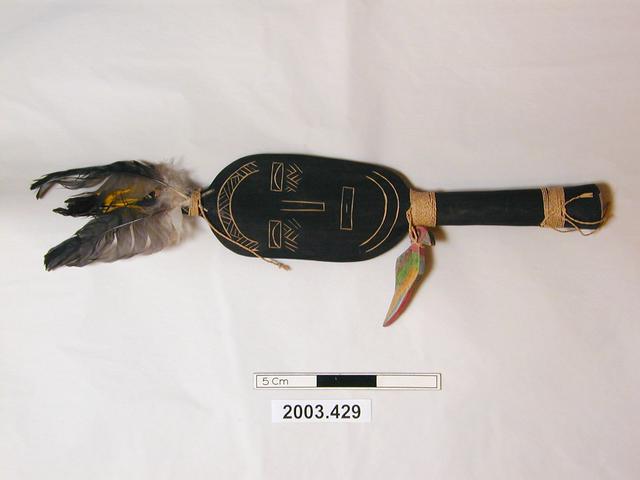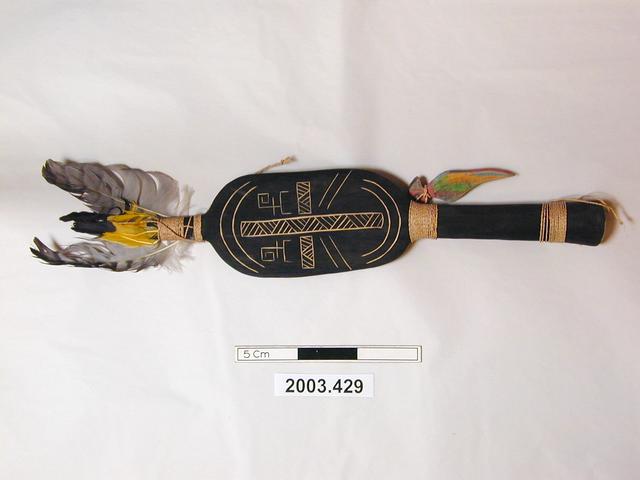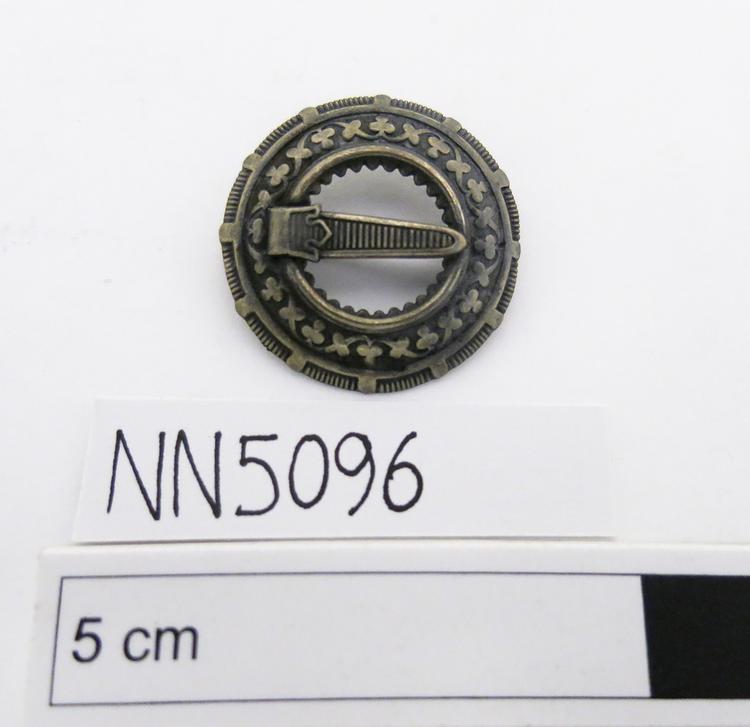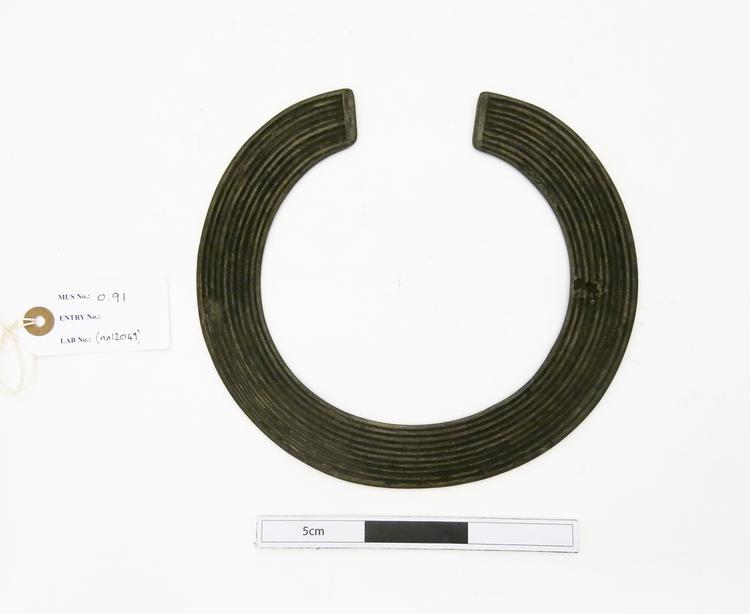

Kanaima beater. Made of corkwood in 1990s by Oswald Hussein. The name actually means, 'the forest spirit beater'. The object is made in the form of traditional Amerindian dance clubs. The decorations or patterns on the club were borrowed from the famous Amerindian petroglyph designs - which are generally believed to represent the ancestors of the Amerindians, i.e. the earlier occupants of Guyana rainforests. The corkwood is normally a light coloured wood but this one was stained using the 'sherada' bark to enable the carved patterns to be more visible. The attached feathers, according to Oswald, 'represent the cultural aspects of shamanism or the Amerindian peoples' spiritual well-being.' When you walk down the road and find a feather on your way, you have to be careful. You will need to ask the following questions: which kind of feather is it? Which bird did it come from?' Birds occupy special or liminal spaces because they are creatures that can both fly in the air and live on earth. A feather represents the spirit of the bird, i.e. the feather of a good bird represents a good spirit and equally a good fortune, and vice versa. The strings attached to the club are recurrent themes in Oswald's work. Here the strings, according to Oswald, 'tie things together. Like a cricket ball which is made up of many strings that have been tied together, tying makes the kanaima club 'stronger.' Club or paddle-shaped carving made of a light-coloured wood which is dyed dark. The handle is rounded, with lengths of string tied around it in two bands. From the string nearest the body of the club hands is a two-dimensional carving of a bird (possibly a parrot) coloured blue and red and green, apparently coloured with pencils. The main body of the club is flat and broad, stained dark, with geometric patterns on each side cut into the light-coloured wood underneath. At the top end of the club is a protrusion to which are fastened two grey feathers and four yellow ones with black tips.






